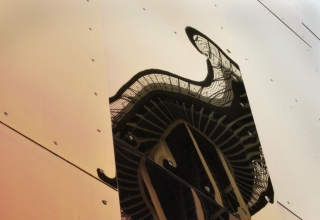
Enacted behaviors
Behaviors are observable events. In the RA model above, based on “intentions”, the individual either enacts the behavior or does not (for example, certain factors such as the “insider threat” messaging I described, was intended to intervene bad behavior). Fishbein and Ajzen describe behaviors as having four dimensions: the action performed, the target at which the action is directed, the context in which it is conducted and the time at which it is performed. Behaviors are observable, whereas attitudes and beliefs are not. The red-dotted arrows in the model above, are important concepts to understand and consider in encouraging and fostering new behaviors. This is discussed below.
Response/consequence
Given that behaviors are generally easy to observe, both positive and negative behaviors require consequences if they are to be reinforced or inhibited. The topic of reward, recognition and punishment is a large topic in its own right, and I won’t attempt to summarize it here. However, it is important to emphasize that leaders and coaches should focus a lot of attention on the consequences (positive or negative) that foster or inhibit behaviors.
Perceived outcome
If an employee has an intention to behave in a certain way, and actually does so, their perception of the outcome of the behavior will greatly influence whether they repeat the behavior or not. In my example of “insider threats”, if an employee perceives they have been successful in copying valuable information assets, they are much more likely to repeat that behavior. Similarly in my example of culture change, where employees were expected to make “agile and quick decisions”, if the perceived outcome of doing so was positive, they were much more likely to accelerate that behavior. The perceived outcome is also influenced by the following factor “Response/Consequence”.
Feedback loops (the red-dotted arrowed lines in the RA model)
What is not apparent in Ajzen & Fishbein’s RA model is the reverse impact that a person’s enacted behaviors can have on their beliefs and attitudes. Aronson identifies this phenomenon as follows:
“What social psychologists have long known, but have only recently begun to understand, is that changes in behavior (even when forced) can affect changes in attitude”.
Aronson uses examples of prejudice in the United States and South Africa to describe the situation where a person’s behavior is encouraged, or forced to change (for example, by expectation in an organization, legislation in a country or other environmental factors) and the cognitive dissonance this causes (in other words, the individual is forced to behave in a manner that is not aligned with his or her entrenched beliefs and attitudes), can have a reverse influence on one’s attitudes and beliefs over time. Aronson describes this as the “saying (and doing) is believing” principle – In other words, being encouraged or force to behave in a certain fashion over time, can ultimately shape an individual’s beliefs. This circumstance is maximized if the new behaviors produce positive experiences. While this reverse effect is not represented in Fishbein and Ajzen’s RA model, I have represented this effect by the adding the reverse red-dotted arrows in the RA model above. I believe this is an important addition to the model and forms a cornerstone of the logic for changing behaviors in organizations and in society.
Download Article 1K Club



















